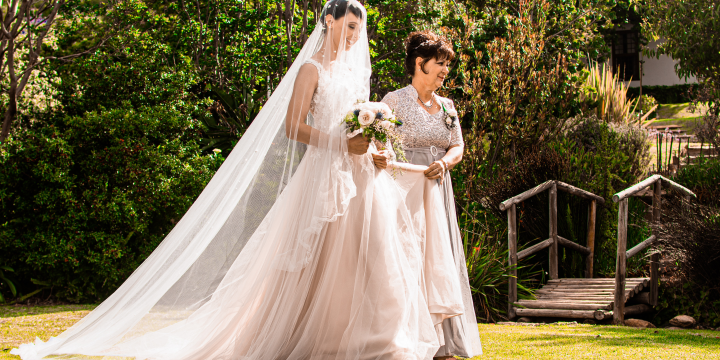Table of Contents
- Key Takeaways
- Understanding the Role and Etiquette of Wedding Attire
- Classical Styles that Stand the Test of Time
- Where to Shop: Finding the Perfect Gown
- Seasonal Considerations for Wedding Attire
- Considerations for Destination Weddings
- Cultural and Traditional Outfits
- Body Positivity and Dressing with Confidence
- The Final Touch: Makeup and Hairstyle Complementing Your Outfit
- After the Wedding: Preserve or Reuse Gowns with A Purpose
Key Takeaways
- Understanding the etiquette and significance of coordinating wedding attire colors.
- Exploring both timeless and modern attire options suitable for mothers of the bride and groom.
- When choosing apparel, consider wedding location, climate, and customs.
- Focusing on body positivity and styles that promote confidence and comfort.
- Discovering ways to preserve or repurpose the gown after the wedding celebration.
Understanding the Role and Etiquette of Wedding Attire
Weddings are celebratory events imbued with tradition, heartfelt emotions, and the hope for a bright future. As such, the mothers of the bride and groom hold distinguished roles, reflecting the family’s spirit and grace. It is a day where elegance meets celebration, and their outfits should resonate with the event’s grandeur. Selecting the proper attire, such as tasteful mother of the bride dresses, involves a thoughtful interplay of color, style, and the wedding’s theme, ensuring that these dignified figures radiate beauty and sophistication.
Engrained in wedding culture is a set of unspoken rules and etiquette, which includes the attire of the mothers of the bride and groom. Their outfits serve as an extension of the wedding’s aesthetic and an expression of respect for the occasion. Color coordination is essential; soft, subdued colors traditionally balance prominence with subtlety. The chosen fabric speaks volumes about the formality of the event. Luxurious fabrics like lace, silk, and crepe are often selected for their blend of comfort and elegance. Understanding these guidelines ensures their attire respects the setting and complements the wedding’s palette and theme.
Classical Styles that Stand the Test of Time
In enduring fashion, classic styles offer a haven of elegance. Defined waistlines, A-line skirts, and modest necklines are everlasting choices that flatter varied body types. The key is to find a look that feels timeless yet personal. This might mean a delicately embroidered jacket over a column dress or a sophisticated mid-length gown with lace detailing. Accessorizing is about striking a balance—perhaps a string of pearls or a tasteful brooch can complete the look without overwhelming the overall effect. Creating a symphony with the wedding theme without overshadowing the bridal attire requires tactful outfit coordination.
Where to Shop: Finding the Perfect Gown
The quest for the quintessential dress is an experience in itself. For many, personal service and unique boutique selections offer a tailored shopping adventure. Others might find the convenience and variety of department stores more appealing. Those who appreciate meticulous craftsmanship may consider the route of custom tailoring, crafting a one-of-a-kind piece that is truly bespoke. Online shopping opens up a global marketplace with endless options. Navigating through customer reviews, understanding return policies, and ensuring ample time for possible alterations are the keystones for a successful online gown purchase.
Seasonal Considerations for Wedding Attire
Seasonal transitions dictate the fabric and color choices of wedding attire. Light and airy fabrics such as chiffon and organza are perfect for warmer months, allowing for breathability and movement. For cooler seasons, materials like velvet or brocade provide warmth and richness in texture. Seasonal color palettes evolve throughout the year, with vibrant hues suited for spring and summer, while autumn and winter weddings often feature more profound, more dramatic tones. The time of year can immensely affect the chosen ensemble’s comfort and style.
Considerations for Destination Weddings
Special considerations come into play with destination weddings. Travel-friendly attire resistant to wrinkles and easy to transport becomes a priority. The local climate and customs should also guide the wardrobe choices—one must balance respecting the local culture and the wedding’s formality. Options for layering can add versatility, allowing the attire to be adapted to changing weather patterns throughout the event.
Cultural and Traditional Outfits
For many, a wedding is the perfect occasion to honor one’s cultural heritage through attire, whether donning a color-rich sari or an intricately embroidered Chi Pao. These traditional elements open a dialogue of history and homage within the setting of nuptial celebrations. When wearing cultural attire, it’s integral to do so with genuine respect and understanding of its origins. Modern interpretations can blend traditional motifs with contemporary styles, creating a fusion that celebrates cultural identity while suiting modern tastes.
Body Positivity and Dressing with Confidence
Confidence stems from wearing an outfit that looks stunning and feels right. It’s about celebrating and embracing each unique shape with styles that accentuate rather than restrict. Fitted bodices, flowing skirts, or strategic pleating can enhance the wearer’s natural beauty. Seeking expert advice and fittings can ensure the dress complements one’s form. The challenge is to find an outfit that doesn’t just fit but also elevates personal confidence—inspiring a sense of poise and comfort throughout the wedding day.
The Final Touch: Makeup and Hairstyle Complementing Your Outfit
When the dress has been chosen, completing the look means finding the perfect balance with makeup and hair. These elements should reflect the attire’s formality and the wearer’s style. A chignon or softly curled tresses can invoke a sense of timeless elegance. Similarly, makeup can enhance natural features with a subtle glow or add a dash of drama with bolder choices. Trials with professionals can prevent day-of surprises, ensuring the overall appearance is cohesive and as envisioned.
After the Wedding: Preserve or Reuse Gowns with A Purpose
The life of a beautiful gown need not be restricted to a single occasion. Wedding attire can be preserved with care for future generations to cherish or repurposed to enjoy at other events. If the emotional attachment isn’t as strong, there’s a growing trend of donating these special dresses to charitable causes—transforming a personal milestone into a gift for others.







